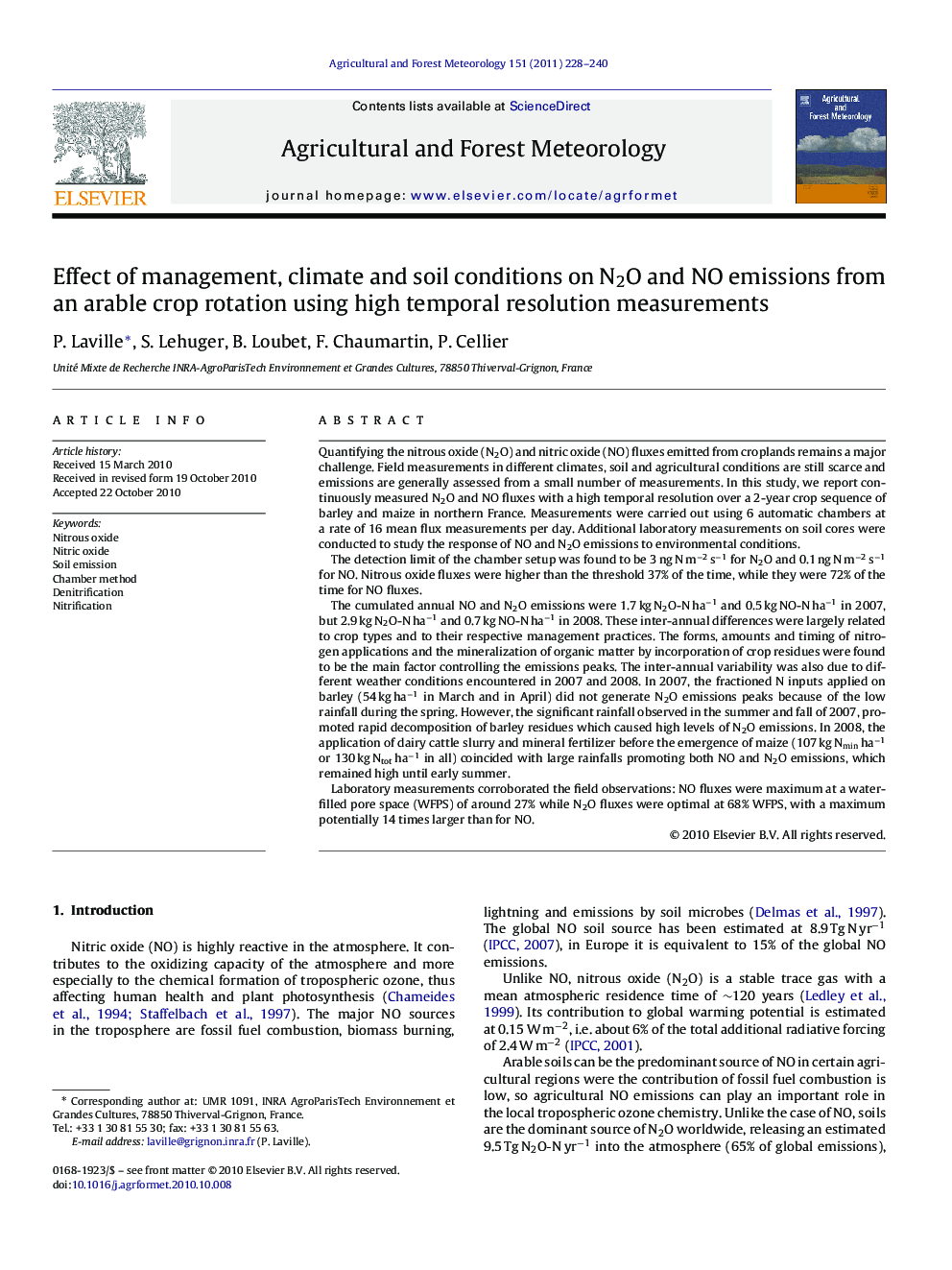| کد مقاله | کد نشریه | سال انتشار | مقاله انگلیسی | نسخه تمام متن |
|---|---|---|---|---|
| 82378 | 158393 | 2011 | 13 صفحه PDF | دانلود رایگان |

Quantifying the nitrous oxide (N2O) and nitric oxide (NO) fluxes emitted from croplands remains a major challenge. Field measurements in different climates, soil and agricultural conditions are still scarce and emissions are generally assessed from a small number of measurements. In this study, we report continuously measured N2O and NO fluxes with a high temporal resolution over a 2-year crop sequence of barley and maize in northern France. Measurements were carried out using 6 automatic chambers at a rate of 16 mean flux measurements per day. Additional laboratory measurements on soil cores were conducted to study the response of NO and N2O emissions to environmental conditions.The detection limit of the chamber setup was found to be 3 ng N m−2 s−1 for N2O and 0.1 ng N m−2 s−1 for NO. Nitrous oxide fluxes were higher than the threshold 37% of the time, while they were 72% of the time for NO fluxes.The cumulated annual NO and N2O emissions were 1.7 kg N2O-N ha−1 and 0.5 kg NO-N ha−1 in 2007, but 2.9 kg N2O-N ha−1 and 0.7 kg NO-N ha−1 in 2008. These inter-annual differences were largely related to crop types and to their respective management practices. The forms, amounts and timing of nitrogen applications and the mineralization of organic matter by incorporation of crop residues were found to be the main factor controlling the emissions peaks. The inter-annual variability was also due to different weather conditions encountered in 2007 and 2008. In 2007, the fractioned N inputs applied on barley (54 kg ha−1 in March and in April) did not generate N2O emissions peaks because of the low rainfall during the spring. However, the significant rainfall observed in the summer and fall of 2007, promoted rapid decomposition of barley residues which caused high levels of N2O emissions. In 2008, the application of dairy cattle slurry and mineral fertilizer before the emergence of maize (107 kg Nmin ha−1 or 130 kg Ntot ha−1 in all) coincided with large rainfalls promoting both NO and N2O emissions, which remained high until early summer.Laboratory measurements corroborated the field observations: NO fluxes were maximum at a water-filled pore space (WFPS) of around 27% while N2O fluxes were optimal at 68% WFPS, with a maximum potentially 14 times larger than for NO.
Research highlights▶ N2O and NO fluxes were measured with 6 automatic chambers at a rate of 16 mean values per day. ▶ The detection limit of the chamber was 2.6 ng N-N2O m−2 s−1 and 0.1 ng N-N2O m−2 s−1. ▶ 63% of the time N2O fluxes were around the detection limit of the chamber device. ▶ Laboratory responses with WFPS are consistent with field flux variations. ▶ Inter-annual differences were related to crop types, management practices and weather pattern.
Journal: Agricultural and Forest Meteorology - Volume 151, Issue 2, 15 February 2011, Pages 228–240